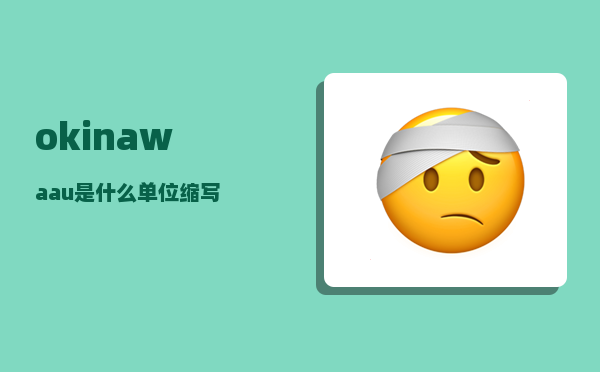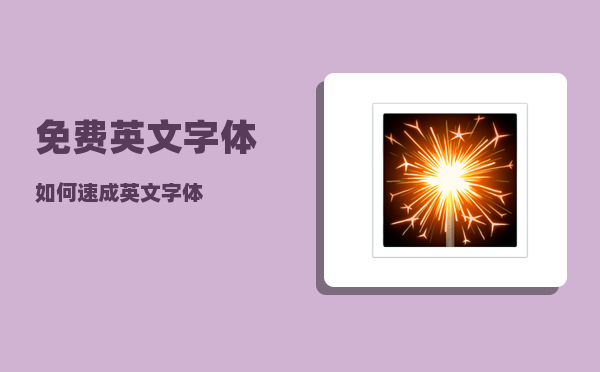okinawa_au是什么单位缩写
okinawa,au是什么单位缩写?
au(エーユー),或au/KDDI(au by KDDI),是一个日本移动电话网络品牌,由KDDI在日本本岛,及冲绳移动电话(Okinawa Cellular)在冲绳经营。其名称原自日文动词会う(会面)及合う(结合),发音皆为au。
日本冲绳人口?
冲绳县(日语:沖縄県/おきなわけん〔おきなはけん〕),是日本最西南侧的一个县,县厅所在地是那霸市。由琉球群岛中的冲绳群岛、先岛群岛以及太平洋中的大东群岛组成,隔海和九州的鹿儿岛县相邻。全县由160个岛屿组成,其中49个有人居住,面积约2,281平方公里,是日本陆地面积第四小的县。但冲绳县包括了广大的海域面积,东西宽约1,000公里,南北长约400公里,算上海域面积则相当于本州、四国、九州面积总和的一半。冲绳县全境属于亚热带气候,全年气候温暖且降水充沛。
中文名琉球
面积2249平方公里
外文名冲縄県(日文)、おきなわけん(平假名)、Okinawa-ken(罗马拼音)
人口数量1373754人(2008年)
著名景点首里城、守礼门
机场那霸机场
气候类型亚热带海洋性气候
方言日语、琉球语
县花刺桐
县树琉球松
县鸟野口啄木鸟
县鱼双带乌尾冬
国内面积排名第44位
年平均气温23℃
冲绳地理位置?
琉球群岛占地面积4644.75平方公里,主要岛屿分为冲绳岛、奄美大岛,先岛诸岛。琉球群岛位于东中国海上,呈东北西南向。
历史上琉球群岛曾存在琉球王国,最早对于琉球王国的记载在《隋书》中出现,中国明朝时曾封琉球岛统治者为琉球王。
冲绳岛原名是什么?
冲绳岛(英文名称:OKINAWAISLAND),北部为山地,占全岛三分之二,有那霸岳、嘉津宇岳、恩纳岳等。南部多台地和平原。其西北部为一半岛——本部半岛。东北部是国头山地。以农业为主,有水田和果园,主产菠萝、甘蔗。水产丰富。有罐头、制糖等工业。那霸为最大港市。(以前是中国的附属国) 日本没有高山大川,日本人心中的香格里拉就是海中的一片净土——冲绳。它离中国很近,从上海飞到冲绳仅1小时40分钟,甚至比东京到冲绳还要近。冲绳与夏威夷、迈阿密、巴哈马,被喻为世界四大海滨观光胜地。
介绍夫子庙的英文?
Temple of Confucius or Confucian Temple is a temple devoted to the cult of Confucius and the sages and philosophers of Confucianism. Confucian temples are variously known as Confucian Temples (孔庙), Temples of Literature or Culture (文庙), or Temples of the Sage (圣庙). Some are also known as "Fuzi Miao" (夫子庙), after Confucius's unLatinised Chinese name: "Kong Fuzi" (孔夫子) or "Master Kong".
History
The largest and oldest Temple of Confucius is found in Confucius's hometown, present-day Qufu in Shandong Province. It was established in 478 BCE, one year after Confucius's death, at the order of the Duke Ai of the State of Lu, who commanded that the Confucian residence should be used to worship and offer sacrifice to Confucius. The temple was expanded repeatedly over a period of more than 2,000 years until it became the huge complex currently standing.
The development of state temples devoted to the cult of Confucius was an outcome of his gradual canonisation. In 195 BC, Han Gao Zu, founder of the Han Dynasty (r. 206–195 BCE), offered a sacrifice to the spirit of Confucius at his tomb in Qufu. Sacrifices to the spirit of Confucius and that of Yan Hui, his most prominent disciple, began in the Imperial University (Biyong) as early as 241.
In 454, the first state Confucian temple was built by the Liu Song dynasty of south China (420 to 479). In 489, the Northern Wei constructed a Confucian temple in the capital, the first outside of Qufu in the north. In 630, the Tang dynasty decreed that schools in all provinces and counties should have a Confucian temple, as a result of which temples spread throughout China. Well-known Confucian shrines include the Confucian Temple in Xi'an (now the Forest of Steles), the Fuzi Miao in Nanjing, and the Confucian temple in Beijing, first built in 1302.
In addition to Confucian temples associated with the state cult of Confucius, there were also ancestral temples belonging to the Kong lineage, buildings commemorating Confucius's deeds throughout China, and private temples within academies.
Structure
Most Confucianist temples were built in Confucian schools, either to the front of or on one side of the school. The front portal of the temple was called the Lingxing Gate (棂星门). Inside there were normally three courtyards, although sometimes there were only two. However, the complex in Qufu has nine courtyards. The main building, situated in the inner courtyard with entry via the Dachengmen (大成门), was usually known as the Dachengdian (大成殿), variously translated as "Hall of Great Achievement", "Hall of Great Accomplishment", or "Hall of Great Perfection". This hall housed the Confucius Ancestral Tablet and those of other important masters and sages. In front of the Dachengdian was the Apricot Pavilion or Xingtan (杏坛). Another important building was the Shrine of the Great Wise Men (Chongshengci 崇圣祠), which honoured the ancestors of Confucius.
Unlike Daoist or Buddhist temples, Confucian temples do not normally have images. In the early years of the temple in Qufu, it appears that the spirits of Confucius and his disciples were represented with wall paintings and clay or wooden statues. Official temples also contained images of Confucius himself. However, there was opposition to this practice, which was seen as imitative of Buddhist temples. It was also argued and that the point of the imperial temples was to honour Confucius's teachings, not the man himself.
The lack of unity in likenesses in statues of Confucius first led Emperor Taizu of the Ming dynasty to decree that all new Confucian temples should contain only memorial tablets and no images. In 1530, it was decided that all existing images of Confucius should be replaced with memorial tablets in imperial temples in the capital and other bureaucratic locations, a rule still followed today. However, statues remained in temples operated by Confucius's family descendants, such as that in Qufu.
Worship
The state cult of Confucius centred upon offering sacrifices to Confucius's spirit in the Confucian temple.
A dance known as the Eight-Row Dance, consisting of eight columns of eight dancers each, was also performed. Originally this was a Six-Row Dance, as performed for the lesser aristocracy, but in 1477 Confucius was allowed the imperial honour of the eight-row dance since he posthumously received the title of king.
In addition to worshipping Confucius, Confucian temples also honoured the "Four Correlates" (四配), the "Twelve Philosophers" (十二哲), and other disciples and Confucian scholars through history. The composition and number of figures worshipped changed and grew through time. Since temples were a statement of Confucian orthodoxy, the issue of which Confucians to enshrine was a controversial one.
By the Republican period (20th century), there were a total of 162 figures worshipped. The Four Correlates include Yan Hui, Zeng Shen, Kong Ji, and Mencius. The Twelve Philosophers are Min Zijian, Ran Boniu, Zhong Gong, Cai Wo, Zi-gong, Ran You, Zi-Lu, Zi-You, Zi-Xia, Zi-Zhang, You Ruo, and Zhu Xi. A list of disciples of Confucius and their place in the Confucian temple can be found at Disciples of Confucius.
Van Mieu, VietnamConfucian temples outside China
With the spread of Confucian learning throughout East Asia, Confucian temples were also built in Vietnam, Korea, and Japan. Starting in the 18th century, some were even built in Europe and the Americas. At their height, there are estimated to have been over 3,000 Confucian temples in existence.
The earliest recorded Confucian Temple in Vietnam is the Temple of Literature or Van Mieu in Hanoi, established in 1070. After 1397, with the construction of schools throughout Vietnam under the Tran, Confucian temples began to spread throughout the country. Well known Confucian temples were built in Hue, Hoi An, Hai Duong, and An Ninh.
Outside China, the largest number of Confucian temples is found in Korea. Temples were first built during the Goryeo period. In the time of Yi Seonggye, it was decreed that Confucian temples should be built in all areas of the nation. Although Chinese models were followed, variations in layout and construction were common, such as the building of schools in front of temples. Korea also added its own scholars (the eighteen scholars of the East) to the Confucian pantheon.
Historically, Korea had a total of 362 temples devoted to the cult of Confucius. After World War II and the division of the country, those in the north were converted to other uses. However, many of the 232 temples in the south continued their activities. In addition to temples devoted to the cult of Confucius, the Republic of Korea also has twelve Confucian family temples, two temples in private schools, and three libraries.
Confucian temples (孔子庙 kōshi-byō) were also widely built in Japan, often in conjunction with Confucian schools. The most famous is the Yushima Seido, built in 1630 during the Edo period as a private school connected with the Neo-Confucianist scholar Hayashi Razan. Originally built in Shinobi-ga-oka in Ueno, it was later moved to Yushima (Ochanomizu) by the Tokugawa Shogunate and reopened as a school of Confucianism to spread the teachings of the Hayashi school.
Other well known Confucian temples are found in Nagasaki, Bizen (Okayama prefecture), Taku (Saga prefecture), and Naha (Okinawa prefecture).
Confucian temples are also found in Indonesia, where they are often known as "Churches of Confucius" as Confucianism is a recognised religion in that country. The largest and oldest is the Boen Bio in Surabaya, originally built in the city's Chinatown in 1883 and moved to a new site in 1907. There are reportedly more than 100 Confucianist litang (礼堂, halls of worship) throughout Indonesia.



